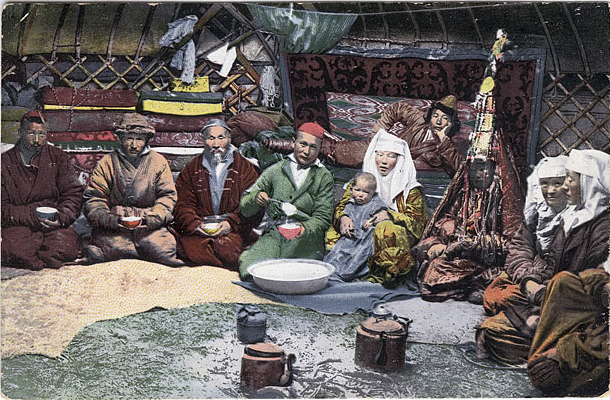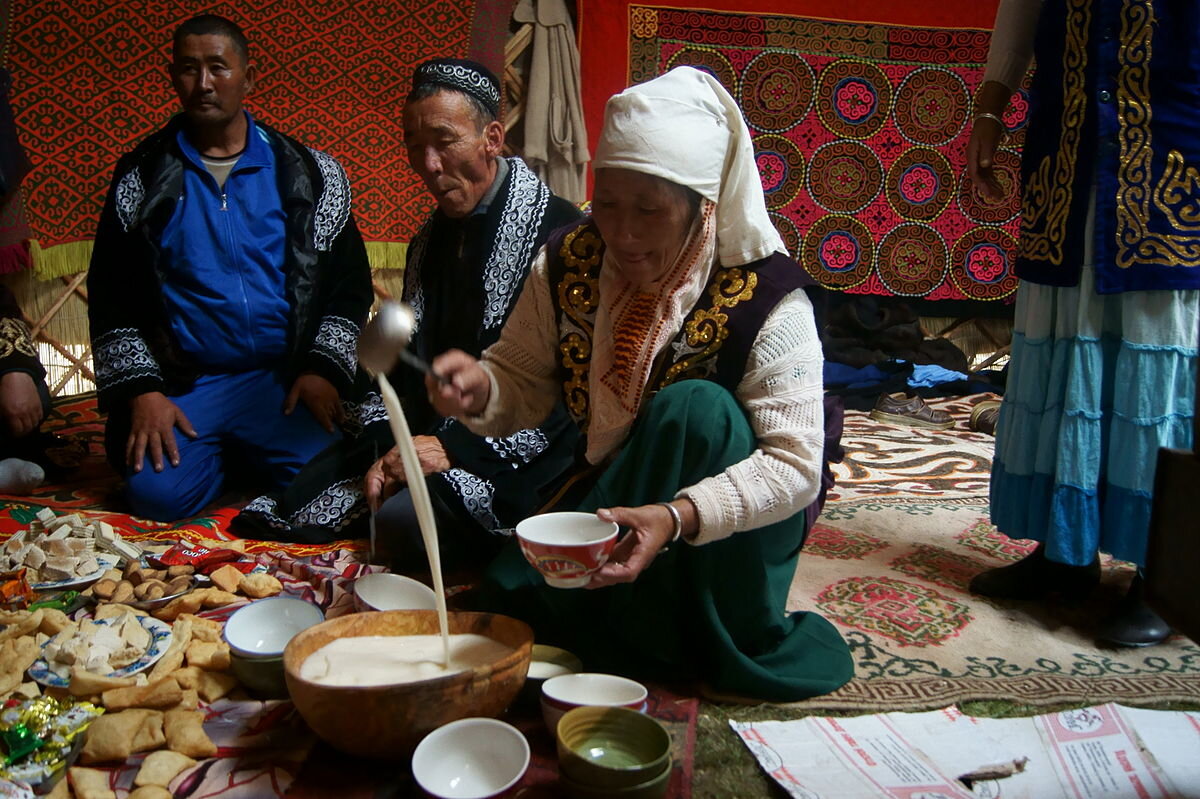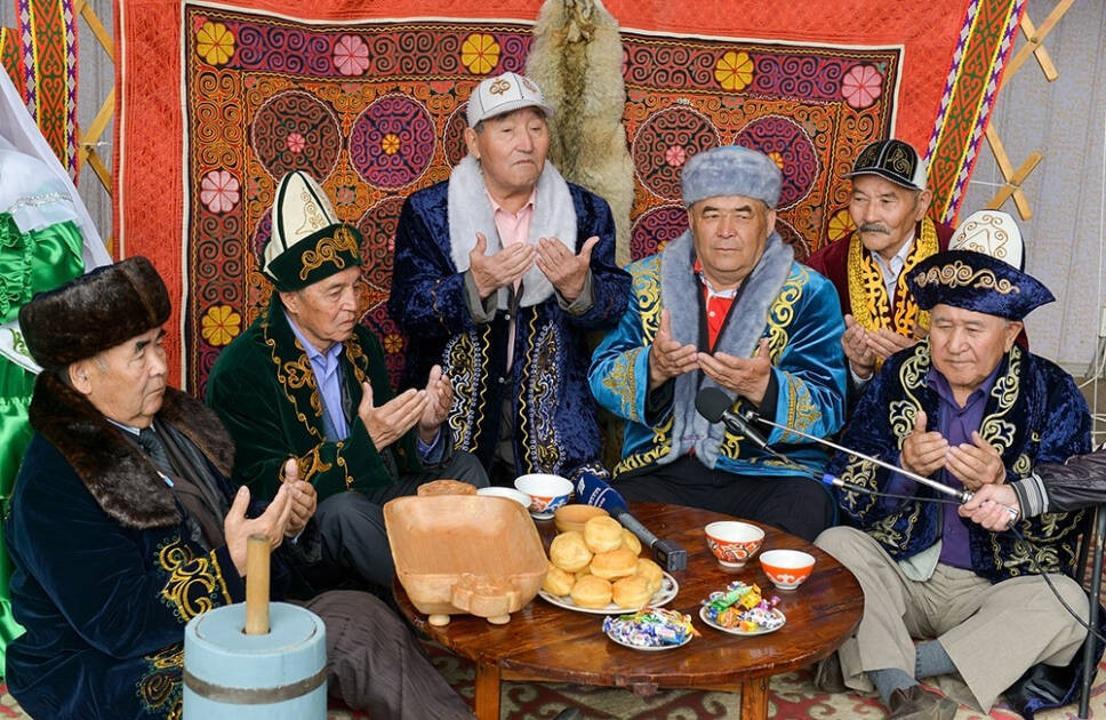Kinship at Core: Exploring Foundations of Kazakh Family Ties

ASTANA – Family is the foundation of Kazakh society, occupying a central place in the culture. Traditionally, the Kazakh family structure is built on a strong sense of unity and mutual support among its members.

Kazakh family in a yurt, on the right – daughter-in-law in saukel, photo from 1911. Photo credit: wikipedia.org
In an interview with Tengri news agency, Saltanat Asanova, a leading researcher at the Shokan Ualikhanov Institute of History, discussed the intricate web of Kazakh kinship ties and the significant role of the zhuz, an alliance of nomadic clans.
Main groups of relatives
“Kinship ties play a central role in the social life of every Kazakh,” said Asanova.
She referenced Akseleu Seidimbek, a renowned art historian and ethnographer, who noted in his book “The World of Kazakhs” that there are 99 names for blood relatives among Kazakhs.
According to Asanova, Kazakh relatives are categorized into three main groups. The first, oz zhurty, meaning “own people, own relatives,” refers to individuals from the same clan. This group includes the closest relatives on the father’s side—father, grandfather, grandmother, and siblings, as well as cousins.
The second group is nagashy zhurty, which consists of maternal relatives such as the mother, maternal grandparents and maternal siblings. In patriarchal Kazakh society, maternal lineage was often not recognized.

Photo credit: caa-network.org
“If you have daughters but no sons, it is believed you have no grandchildren, as the children of daughters belong to the father’s clan,” said Asanova. “However, this did not diminish the importance of relationships with maternal relatives.”
The third group consists of relatives through the wife, known as kayin zhurty. These relatives were also considered close family members.
Asanova emphasized that these groups form a complex but well-organized system of kinship, with many additional terms for close relatives that highlight the importance of family ties in Kazakh culture.
“For nomadic peoples, blood kinship has always been fundamental, and shedding a relative’s blood was strictly prohibited,” said Asanova.
Every Kazakh was taught to know their ancestors up to the seventh generation, which tied into beliefs about heredity.
“Kazakhs were natural selectors. They placed great importance on avoiding close kinship ties, believing that blood relationships are preserved up to the seventh generation. Only after this point are individuals no longer considered blood relatives,” she said.
To prevent inbreeding, kinship ties were traced strictly through the paternal line. Not all Kazakh women were included in the shezhire (family tree), which recorded ancestors up to the seventh generation. Only male names were typically documented, as it was believed that if there were no sons, the lineage ended. In rare cases names of influential women were included.
The role of zhuz in Kazakh kinship
Asanova explained that members of the same zhuz were not considered blood relatives, but they were closely connected because they shared the same lineage.
“The clan was the foundation of social and political organization in nomadic societies like the Kazakhs. Alliances among clans built the entire structure of society,” she said.
Clans often formed when some children grew up and chose to separate from the paternal clan to create a new one. Over time, these clans multiplied and united into tribes.
According to Asanova, marriages within the same zhuz were allowed as long as the seven-generation rule was followed.

Members of the same zhuz were not considered blood relatives, but they were closely connected because they shared the same lineage. Photo credit: gov.kz
“In Kazakh tradition, the more distant the relationship of the wife, the better. Marrying women from other zhuz or even foreign women was encouraged. During raids, women were captured and taken as wives. It was believed that the more distant the wife, the healthier and stronger the offspring would be, and the more the bloodline would be renewed,” she said.
This practice explains the wide range of physical appearances among Kazakhs, who can have varying skin tones, eye colors from green to blue, and hair colors from red to blonde.
However, Asanova noted that girls were generally not married off to outsiders, as families sought to preserve their genetic pool. The more women remained within the clan, the stronger it became, while a decline in the number of women weakened the clan.

Asanova noted that girls were generally not married off to outsiders, as families sought to preserve their genetic pool. Photo credit: gov.kz
Asanova emphasized that blood relations continue to be a key aspect of modern Kazakh life, and the kinship system, which dates back to ancient times, has retained its significance.
“The Soviet government attempted to suppress kinship consciousness, recognizing it as the basis for social and ethnic unity. Although they viewed kinship ties as relics of the past, they could not eradicate them because they remain an integral part of Kazakh identity,” she said.
In ancient times, even the Kazakh state was referred to as “el”, which translates to “people.”
“The strength of the Kazakh people lay not in geographic boundaries but in the unity of individuals connected through kinship. Kinship played a key role in territorial development, which was viewed not as abstract land with borders but as ancestral territory belonging to the clan,” said Asanova.
The article was originally published in Tengri news agency.

